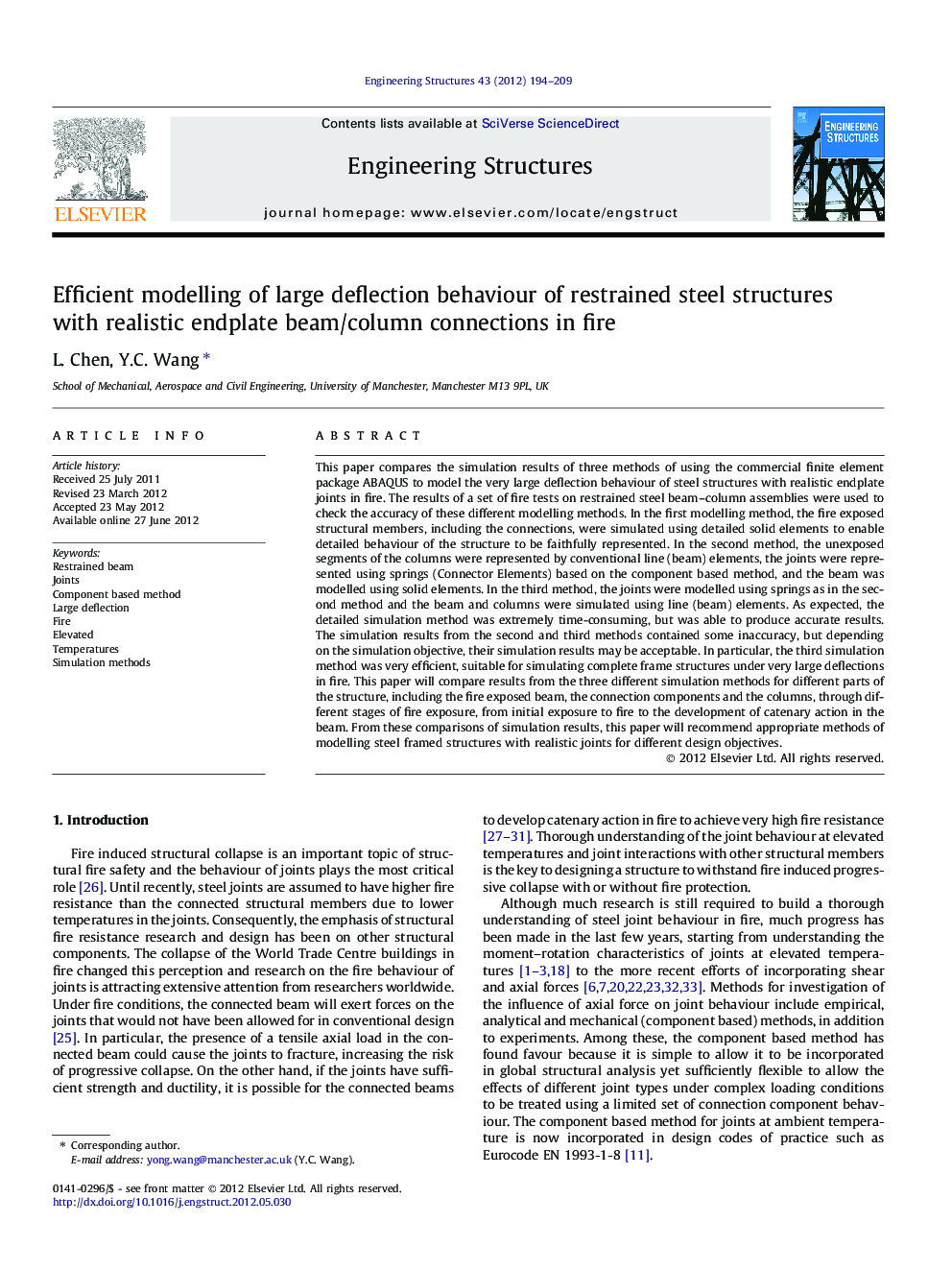| Article ID | Journal | Published Year | Pages | File Type |
|---|---|---|---|---|
| 267385 | Engineering Structures | 2012 | 16 Pages |
This paper compares the simulation results of three methods of using the commercial finite element package ABAQUS to model the very large deflection behaviour of steel structures with realistic endplate joints in fire. The results of a set of fire tests on restrained steel beam–column assemblies were used to check the accuracy of these different modelling methods. In the first modelling method, the fire exposed structural members, including the connections, were simulated using detailed solid elements to enable detailed behaviour of the structure to be faithfully represented. In the second method, the unexposed segments of the columns were represented by conventional line (beam) elements, the joints were represented using springs (Connector Elements) based on the component based method, and the beam was modelled using solid elements. In the third method, the joints were modelled using springs as in the second method and the beam and columns were simulated using line (beam) elements. As expected, the detailed simulation method was extremely time-consuming, but was able to produce accurate results. The simulation results from the second and third methods contained some inaccuracy, but depending on the simulation objective, their simulation results may be acceptable. In particular, the third simulation method was very efficient, suitable for simulating complete frame structures under very large deflections in fire. This paper will compare results from the three different simulation methods for different parts of the structure, including the fire exposed beam, the connection components and the columns, through different stages of fire exposure, from initial exposure to fire to the development of catenary action in the beam. From these comparisons of simulation results, this paper will recommend appropriate methods of modelling steel framed structures with realistic joints for different design objectives.
► Detailed modelling of fire tests on restrained steel beam–column assemblies. ► Implementation of component based connection model in ABAQUS simulation. ► Modelling full range behaviour of steel beams in fire, including catenary action. ► Comparison of different simulation methods.
